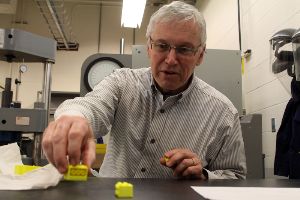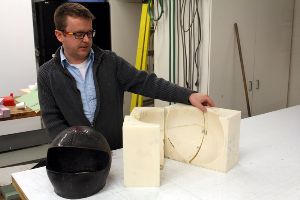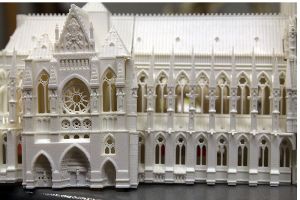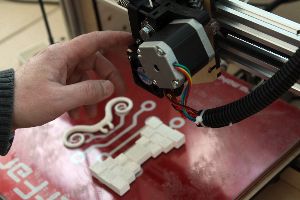THUNDER BAY -- An industrial revolution is coming fast.
Three-dimensional printing technology is evolving so quickly that even those researching and teaching in the field aren’t sure whether their predictions of what will come next already exist.
 “If you can imagine it, you can do it,” says Rod Kotanen, Confederation College’s Aerospace Manufacturing Technology program coordinator.
“If you can imagine it, you can do it,” says Rod Kotanen, Confederation College’s Aerospace Manufacturing Technology program coordinator.
Kotanen was among the first students to graduate from the program in the 1980s. He’s now working with 3D printing technology that’s promising to overhaul the way goods are manufactured and transported.
Originally inspired by the potential of glue gun art, 3D printing uses CAD computer graphics programs and manufactures any file with layered plastics. Students can design a LEGO-like building block, for example, and watch it materialize before their eyes.
 “To create a physical model would typically require machining from a block of steel or aluminum or some other material,that required a lot of setup, a lot of things that could go wrong but this allowed students to press print and they’d end up with a finished product,” Kotanen says.
“To create a physical model would typically require machining from a block of steel or aluminum or some other material,that required a lot of setup, a lot of things that could go wrong but this allowed students to press print and they’d end up with a finished product,” Kotanen says.
“That’s over-simplifying it but that’s sort of what it is.”
Students have built moulds for helmets and one-piece shells for vehicles but Kotanen sees the medium is lending itself to the exploratory imaginations of artists as much as it does to the industrial instincts of engineers.
“The engineers and technology people had preconceived ideas as to what the limits could be on this type of technology,” he says.
“The artists didn’t know that no one had done it before so they just went ahead and did it. They’ve been printing stuff in clays and glasses that weren’t standard printing materials.
 "Now that they’ve done it the technology people are back on board.”
"Now that they’ve done it the technology people are back on board.”
The college recently purchased a 3D scanner, which scans existing objects and digitally converts them into the CAD program. Instead of needing to design the piece in CAD, it effectively makes the 3D printer into a duplication machine where objects can be infinitely reproduced anywhere.
“It’s basically completing the entire circle,” explains Aerospace Manufacturing Engineering technologist Chris Grenke.
“We can go from reverse engineering to 3D printing in one go.”
Grenke and Kotanen are encouraging students to press beyond programming to building 3D printers. In their 2015 class, a student used open source software to build a 3D printer with organic output.
 The prototype is still being refined but the possibility of using soy or polylactic acid as a base for 3D printing rather than petroleum-based products has profound implications.
The prototype is still being refined but the possibility of using soy or polylactic acid as a base for 3D printing rather than petroleum-based products has profound implications.
“Some people have ben using this technology to utilize some wood fibre-reinforced material,” Kotanen says.
“We’re looking at using stuff that has even been recycled. It’s not just depleting our fossil fuels.”
